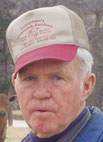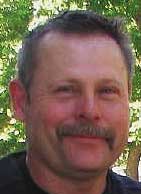
Austin and Kayla Pratt live outside of Harrison, Ark., and are starting a new farm, a daunting task in this day and age. They rent 200 acres on a family farm dating back to 1845 when the land was first purchased by Kayla’s great, great, great grandfather David Trotter.
While the couple were “boyfriend and girlfriend” when they were 4 and attending the same preschool, neither remembered when they met again at the Alpha Gama Rho house at the U of A in Fayetteville, Ark., where both were ag majors. Austin earned a degree in agricultural systems and technology and has worked for three years at a Larson Farm and Lawn branch in Harrison, which is a John Deere dealership. Kayla, on the other hand, earned a degree in animal science, has worked at Quality Feed Grains for four years and is currently the Harrison (Downtown) branch manager.
Though not raised on a farm, Austin did help his grandfather on a cattle farm when he was young. Austin said, “I always knew I wanted to farm. The couple’s first venture was an impulse buy in 2011 of a small group of Gelbvieh who came for sale at a good price. At the time Austin wanted red heifers to AI with Black Angus or Charolais to produce black or yellow calves, which the couple believes sell equally well. That was the beginning of a diverse herd that also includes Red Beefmaster, Black Angus and Hereford cows and heifers. The current herd has 51 mommas and 21 replacement heifers, seven of which were recently purchased and are half-sisters to the first Beefmasters they purchased. The remaining heifers were raised on the farm. Kayla said, “We couldn’t have done any of this without Tim Cooper at Anstaff Bank.”
AI improves the diverse herd and is performed by an ag teacher at North Arkansas College who also works for Select Sires, the source of the Pratts’ semen. Bulls are selected for traits such as calving ease, milk, docility and weaning weights as the prominent criteria.
Cattle health is a high priority. Austin administers two rounds of shots and deworms the herd twice a year. Bull calves are cut rather than banded because the results are more certain and buyers prefer that certainty. During the summer months, Austin monitors for the ever present danger of pinkeye. The use of rural water rather than pond water is an added health benefit and is supplied through insulated waterers installed with the aid of NRCS.
All cattle receive ADM mineral supplements, and replacement heifers and weaned calves are fed 13 percent protein Cattle Grower feed from Quality Feed Grains. In order to keep pastures able to support the herd, Austin uses rotational grazing based on grass conditions and, at the advice of his extension agent, drills Crimson Clover and rye grain in a 40-acre pasture that was once part of Kayla’s grandfather’s extensive alfalfa hay operation. That pasture is used for winter forage and then harvested in the spring for haylage protected by several layers of plastic to retain its integrity. Austin also hays on halves with a neighboring farmer who has the needed equipment. The entire feeding process maximizes feed quality while minimizing costs. Austin laughed and said, “I do the work and Kayla is the brains.”
Having met the initial challenges of starting a new farming operation, the couple hopes to have significantly increased herd size in five years and perhaps start a family themselves.
Any family that has been in an area as long as Kayla’s is bound to have had a significant impact on local agriculture. Kayla’s father, Leon Wallace, who had a good eye for cattle and was a good auctioneer, built Cattlemen’s Livestock Auction in Harrison. In 1976 and 1978, Leon was the runner-up World Auctioneer.
Austin and Kayla are hoping to one day be fulltime farmers continuing a 169-year family tradition in agriculture.







